Episode 1650
Topic: Imaginary Friends
Air Date: February 28, 1992
Previous Episode: 1649 - Imaginary Friends
Next Episode: 1651 - Learning
Purchase/Stream: Amazon
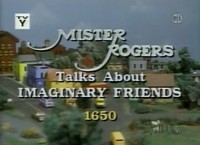 Mister Rogers arrives with a doll of himself made by a friend. After playing a few games with the doll, Mister Rogers explains that the doll cannot do anything by itself since it is not a live person. He recalls a time when he was a child and adults would pretend to "take his nose" or "take his ear" and how that made him uncomfortable. To emphasize the point that humans are all one piece, Mister Rogers sings Everything Grows Together.
Mister Rogers arrives with a doll of himself made by a friend. After playing a few games with the doll, Mister Rogers explains that the doll cannot do anything by itself since it is not a live person. He recalls a time when he was a child and adults would pretend to "take his nose" or "take his ear" and how that made him uncomfortable. To emphasize the point that humans are all one piece, Mister Rogers sings Everything Grows Together.
Maggie Stewart stops by to invite Mister Rogers to the Sing-and-Sign at Brockett's Bakery. Before she leaves, she teaches Mister Rogers a portion of sign language for Everything Grows Together. Bob Trow also stops by and asks Mister Rogers to deliver a present to the singer at the bakery.
In the Neighborhood of Make-Believe, Queen Sara and Mayor Maggie are meeting about Food for the World when Robert Troll arrives at the castle with news that the Museum-Go-Round will not stop spinning. Lady Elaine Fairchilde blames Daniel's imaginary friend, Malcolm Apricot Dinko, for the spinning museum.
Neighbor Aber arrives and invites Mayor Maggie to join him for a picnic in Westwood with himself, Daniel, and Malcolm. Lady Elaine is caught red-handed as this invitation reveals that Malcolm has been in Westwood all day. Lady Elaine explains that she was responsible for the spinning museum and asks to be invited to the picnic.
Back at the house, Mister Rogers visits the Sing-and-Sign at Brockett's Bakery where Ella Jenkins is singing songs while Maggie Stewart communicates the lyrics in sign language. Ms. Jenkins opens the gift from Bob Trow to find a portrait of herself.
Appearing In This Episode
- Bob Trow
- Chef Brockett
- Ella Jenkins
- Lady Elaine Fairchilde
- Maggie Stewart
- Mayor Maggie
- Mister Rogers
- Neighbor Aber
- Queen Sara Saturday
- Robert Troll
- Sergio Pinto
Songs
Images
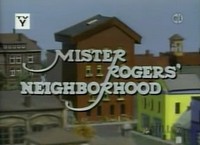
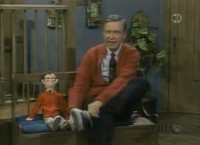
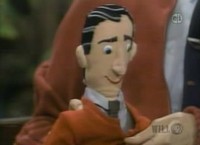
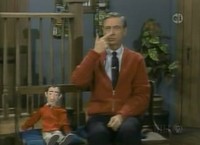
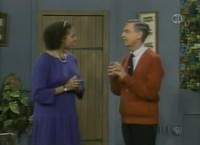
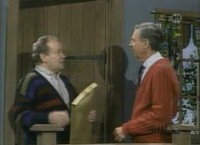
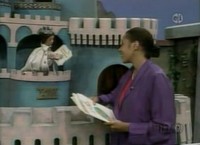
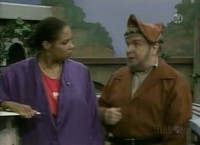
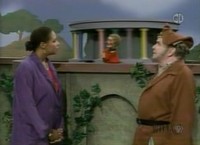
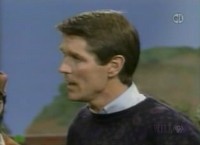
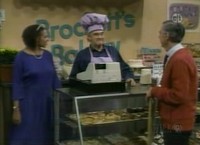
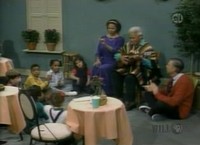
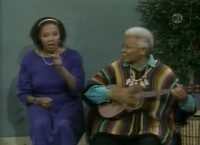
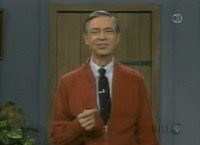
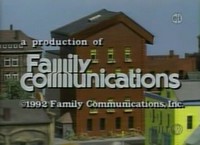
Episode Credits
With Fred Rogers
Neighbors: Chuck Aber, Don Brockett, Ella Jenkins, Sergio Pinto, Maggie Stewart, Bob Trow
Executive Producer: Fred Rogers
Producer: Margaret Whitmer
Director: Bob Walsh
Associate Producer: Adrienne Wehr
Music Director: John Costa
Art Director: Kathryn Borland
Editor: Susan Howard
Assistant Art Director: Judith Stagg
Properties: Matt Marcus
Production Assistants: Joanne Mandros, Lenny Meledandri
Lead Technician: Ken Anderson
Studio Supervisor: Doug Coates
Production Coordinator: Hugh Downing
Assistant Director: Bill Medica
Technical Director: Jim Ochtun
Lighting Director: Frank Warninsky
Assistant Lighting Director: Joe Abeln
Video: Don Williamson
Audio: Dick LaSota
Studio Cameras: Jack Arthurs, Don McCall, Bob Vaughn, Art Vogel, Ron Vangura
Videotape: Bill Moore
Floor Manager: Nick Tallo
Assistant Floor Manager: Jim Seech
Location Production: Mark Adelsheim, Paul Brown, John Burdick, Chris Dahl, Nathan Hathaway, Bob Lubomski, Dick Mijatovich, Ellen Philips, John Rice
Carpenter: Rich Karapandi
Scenic Artists: Cathy Bruce, James Desmone, Andrew Drake, Pam Lewis, David Pohl, Alexis Samulski, Sandra Streiff, Beth Ann Zamborsky
Videotape Editor: Kevin Conrad
Post Production Sound: Dean Becker, Dennis Williams
Musicians: Carl McVicker, Bob Rawsthorne
Original Scenic Design: Jack Guest
Director of Production: Sam Newbury
Consultant: Albert V. Corrado M.D.
Produced in association with WQED/Pittsburgh
A production of Family Communications
©1992 Family Communications, Inc.
